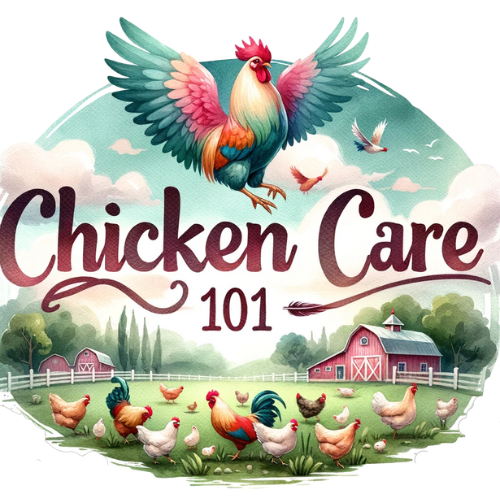Have you ever wondered how the size of a flock can affect the amount of feed and nutrition they require? In this article, we will explore the fascinating relationship between flock size and their hunger. By understanding the implications of flock size on feed and nutrition requirements, you will gain valuable insights into how to best care for your flock and ensure their optimal health and well-being. Join us on this enlightening journey as we uncover the impact of flock size on their voracious appetites and the nutritional needs they demand.
Flock size and the impact on feed and nutrition requirements
Understanding the correlation between flock size and nutrition requirements
When it comes to managing a poultry flock, it is crucial to consider the impact of flock size on feed and nutrition requirements. Flock size plays a significant role in determining the nutritional needs of the birds and must be taken into account during the planning and management process. Understanding the correlation between flock size and nutrition requirements is essential to ensure the health, well-being, and optimal performance of the birds.
Factors influencing nutrition requirements in different flock sizes
Several factors influence the nutrition requirements of poultry in different flock sizes. These factors include the age and growth rate of the birds, the production purpose (meat, eggs, or dual-purpose), the breeds and genetic potential, the environmental conditions, and the activity level and management systems in place. Each of these factors contributes to varying nutritional needs and must be considered when formulating diets and feeding strategies.
The challenges of managing feed and nutrition in large flocks
Managing feed and nutrition in large flocks can present numerous challenges. One of the primary challenges is increased competition for feed resources. In larger flocks, birds often have to compete for access to feed, which can lead to uneven nutrient intake and potential nutrient deficiencies. Ensuring uniform access to feed becomes crucial in preventing these issues and maintaining flock health.
Additionally, monitoring individual nutrient intake becomes more difficult in larger flocks. It is important to ensure that each bird receives the necessary nutrients for optimal growth and production. However, in large flocks, it can be challenging to track the intake of each bird. This can result in an increased risk of nutrient deficiencies or excesses, negatively impacting the overall health and performance of the flock.
Furthermore, implementing effective biosecurity measures becomes more critical in larger flocks. With more birds in close proximity, the risk of disease transmission and outbreaks increases. Managing feed and nutrition properly can help support the immune system of the flock and minimize the effects of potential health implications.
Optimizing feed efficiency in smaller flocks
In smaller flocks, optimizing feed efficiency becomes a key consideration. By adjusting feed rations based on individual bird needs, feed wastage and spillage can be minimized. Each bird’s specific nutritional requirements can be met, leading to enhanced nutrient absorption and utilization.
Tailored feeding programs can be developed for smaller flocks to ensure optimal performance. By fine-tuning the diet formulation and feeding strategies, the nutritional needs of the birds can be met more precisely. This allows for improved feed efficiency and, ultimately, better utilization of available resources.
Flock size impacts on nutrient availability and utilization
The size of the flock has a direct impact on the availability and utilization of nutrients. In larger flocks, flock density plays a significant role in nutrient dissemination. Birds in closer proximity have increased competition for nutrients, which can lead to reduced availability for individual birds.
Understanding how flock size affects nutrient partitioning is crucial. In larger flocks, the challenge lies in achieving uniform nutrient intake among all birds. Some birds may consume more than their fair share, while others may be left with insufficient nutrient intake. This imbalance can result in suboptimal growth and production.
Effective management practices can help maximize nutrient utilization in larger flocks. By implementing feeding strategies that promote even nutrient distribution and uptake, the nutritional needs of the entire flock can be better met.
Balancing nutrient requirements in larger flocks
Achieving the proper balance of nutrients in larger flocks requires careful consideration. Determining the appropriate nutrient density is essential to prevent nutrient deficiencies or excesses. Through regular testing and analysis, nutrient gaps or excesses can be identified and addressed in group feeding situations.
Supplementation strategies can be utilized to meet individual nutrient requirements within larger flocks. By providing additional nutrient sources or feed additives, specific nutrient needs can be met for birds that may require extra support. This ensures that every bird receives the necessary nutrients for optimal health and performance.
Maintaining flock uniformity in nutrient intake is another important aspect of managing larger flocks. Feeding behaviors and social dynamics within the flock can impact nutrient distribution. Careful attention must be given to feed accessibility and ensuring that all birds have equal opportunities for nutrient intake.
Feeding strategies for various flock sizes
Adapting feeding programs to meet the demands of different flock sizes is crucial for optimal nutrition. Group feeding and individual feeding approaches can be employed based on the specific flock size. Group feeding can be more practical and efficient in larger flocks, while individual feeding allows for a more precise control of nutrient intake in smaller flocks.
Feeder space allocation and accessibility is an important consideration in managing nutrition. Sufficient feeder space must be provided to ensure that all birds have equal access to feed. In larger flocks, the number and distribution of feeders become critical to minimize competition and maximize nutrient intake.
Utilizing feeding automation technologies can also be beneficial in accommodating the needs of large flocks. Automated feeders can ensure a more consistent and controlled feeding process. This can lead to better feed efficiency and nutrient utilization.
Supplemental feed sources can be utilized to complement the primary feed and meet the specific needs of the flock. Alternative feed ingredients or additives can be incorporated to optimize nutrition and support the health and performance of the birds.
Economic considerations in feed and nutrition management
Managing feed and nutrition in poultry flocks involves economic considerations. The cost implications of feed and nutrition requirements must be carefully assessed. The efficiency and productivity indicators of the flock must be monitored to evaluate the return on investment.
Budgeting for feed and nutrition in different flock sizes is essential for financial planning. Understanding the cost of meeting the flock’s nutritional needs allows for better allocation of resources. Adjustments can be made to ensure that the flock’s nutritional requirements are adequately met while maintaining cost-effectiveness.
Monitoring and adjusting nutrition requirements based on flock size
Continuous monitoring of the flock’s nutrition requirements is crucial. As flock size fluctuates, adjustments must be made to the feeding program and diet formulation. Regular testing and analysis can help identify any changes in nutrient demands and ensure they are met accordingly.
Flock size should always be taken into account when evaluating the nutritional management of the flock. By recognizing the impact of flock size on feed and nutrition requirements, farmers can make informed decisions to optimize flock health and performance.
Conclusion
In conclusion, flock size plays a vital role in determining feed and nutrition requirements in poultry flocks. Understanding the correlation between flock size and nutrition is crucial for optimal flock management. Various factors, such as age, production purpose, breeds, and environmental conditions, influence the nutritional needs of the birds.
Managing feed and nutrition in large flocks presents challenges such as increased competition for feed resources, difficulties in monitoring individual nutrient intake, and potential health implications. On the other hand, optimizing feed efficiency in smaller flocks can be achieved by tailoring feeding programs to meet individual bird needs.
Flock size impacts nutrient availability and utilization, necessitating the balancing of nutrient requirements in larger flocks. Feeding strategies can be adapted based on flock size, and considerations must be made for feeder space allocation and accessibility. Economic considerations are also essential in feed and nutrition management.
Monitoring and adjusting nutrition requirements based on flock size ensures that the nutritional needs of the flock are met accurately. By continually improving our understanding of flock size impacts, we can enhance our ability to address their effects and optimize flock health and performance.




